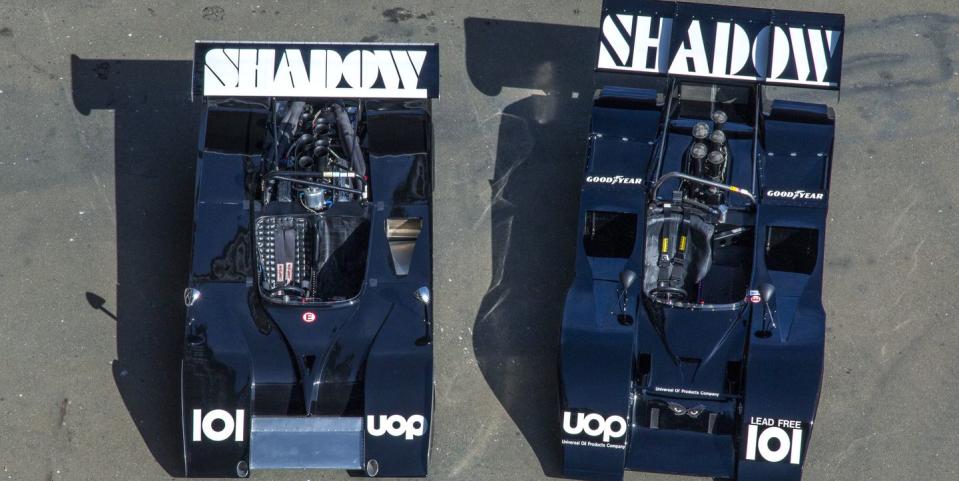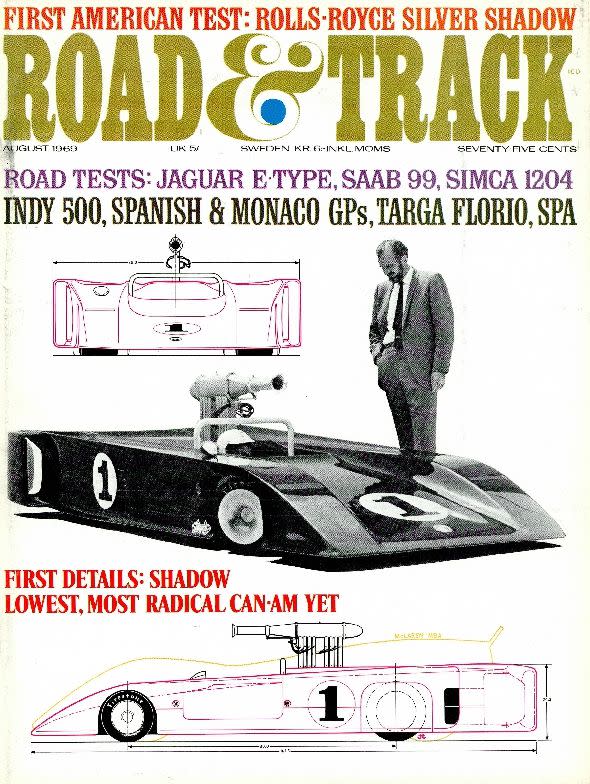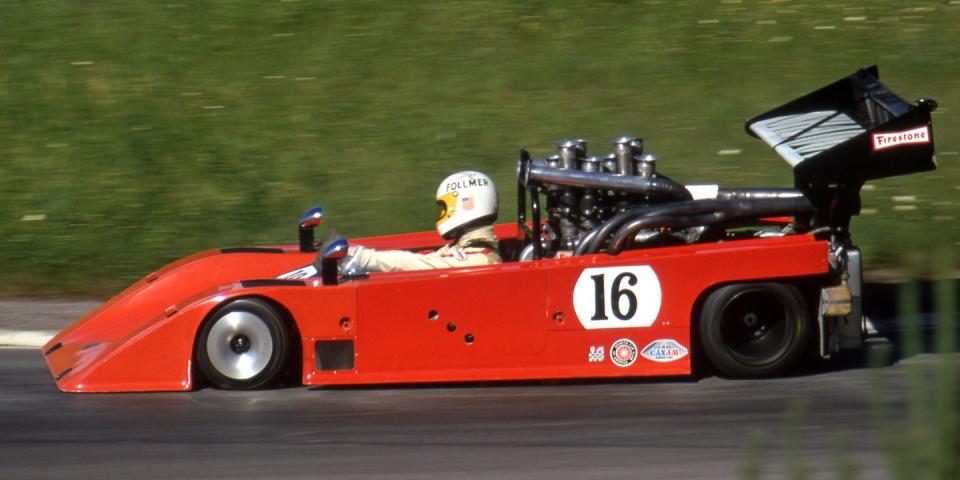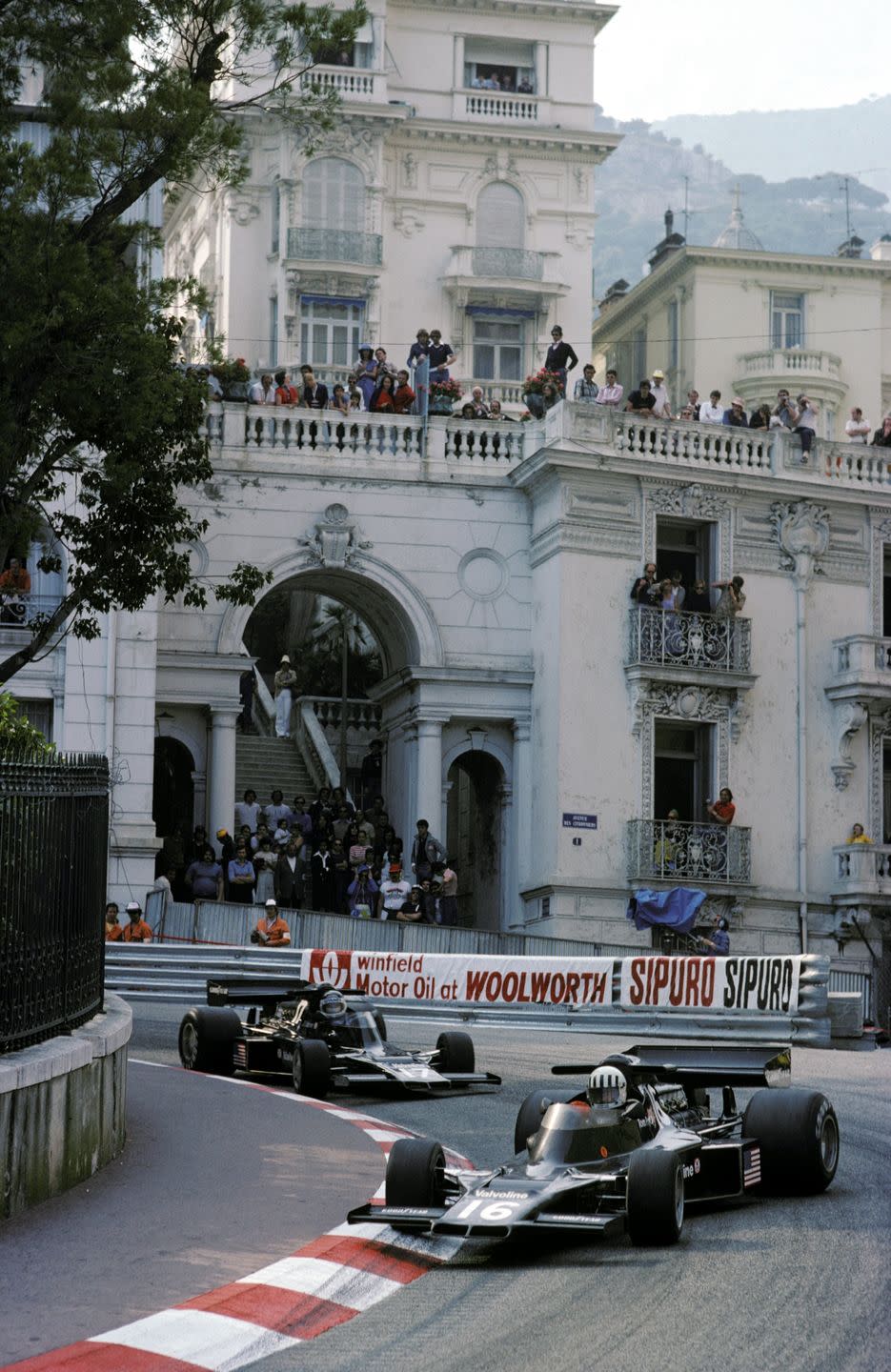Shadow, The Mysterious Racing Team Run by a Spy

For nearly a dozen years, an American racing team helmed by an ex-paratrooper and former counter-espionage agent competed at the highest level of Can-Am and Formula One racing. The team was called Shadow, its mascot was a spy, and its leader was the tall and secretive Don Nichols, fluent in Japanese and skilled at judo. A half-century of half-truths and misinformation later, a new book is shedding light on Shadow, even as the team's cars run again at Road America. It's one of the greatest racing stories never before told.
"He was interested in the artistic side of it, the creative part," says Pete Lyons, author of Shadow: The Magnificent Machines of a Man of Mystery. "Somehow, [Don Nichols] just kept going."
The heart of the Shadow team, Nichols died in 2017, having led a life you'd scarcely believe. As a toddler, he survived a tornado that killed his mother and flung him into the woods. He was raised as an orphan and left high school to join the U.S. Army. On D-Day, he stepped out of an airplane and landed in Normandy with the 101st Airborne, living out the scenes portrayed in the miniseries Band Of Brothers. The experience gifted him with mental toughness and a love of the military. He later fought in Korea, earning his captain's bars, and afterwards joined Military Intelligence. He was posted to Japan with his family, where he performed Cold War services that he still wouldn't reveal decades later when Lyons interviewed him. Neither would he confirm that he had worked for the CIA, though he did chuckle when asked.
"As someone once said about Enzo Ferrari, he was as closed as a walnut," Lyons said. "He knew everyone, but few people knew him."
Lyons persisted, and was able to get some details out of the secretive Nichols. Even then, the man shrouded his revelations in mystery. One vignette from Lyons' book embodies this cageyness. "Our assignment was to get rid of the Russians by anything other than open gunfire," Nichols told Lyons. "We managed to get their activities in Tokyo shut down, but they were hanging on in Yokohama."
After whatever skulduggery he was up to in the postwar period ended, Nichols became a leading figure in Japan's ascendant motorsport scene. He imported Excaliburs, the neoclassic Mercedes SSK replicas initially built by Studebaker, cheekily displaying them next to actual Mercedes models at the Osaka auto show. He bought a Jaguar XK120 and raced it against a matching one driven by legendary Japanese actor Toshiro Mifune at Tamagawa speedway.
Tall, spare, and bearded, Nichols surprised the Japanese with his fluency and wit. He became known as someone who could get things done, helping Toyota get Koni shocks out of Holland for a race car. He imported Mooneyes hot-rodding parts and set up a tire importation business, first with Goodyear and later with Firestone. Somewhere along the way he found time to hire Sir Stirling Moss to help build Fuji International Speedway.
Wheeling and dealing netted Nichols a great deal of money. He went from living in the countryside to having a downtown Tokyo office across from the American Embassy. He seemed to know everything about everybody in the racing scene, but kept apart, keeping his secrets close.
"He was a very private person," said Walter Wolf, who fielded a privateer F1 racing team in the 1970s. "He was never part of the partying crowd."

Nichols had his cloak, and in August of 1969, his Advanced Vehicle Systems team revealed its dagger. Displayed on the cover of that month's issue of Road & Track, the first Shadow was impossibly low and wedge-shaped, the intake for its engine jutting forward like an artillery piece. Nichols, as patrician and leonine as Christopher Lee, looks fondly down at the little car, which barely comes to his knee.
Seen in competition and testing, the first Shadow was 100-percent Grade-A Bat Guano. Painted orange and looking like the love child of a wood chipper and a doorstop, the concept revolved around low frontal surface area made possible by tiny wheels, 10 inches at the front and 12 inches the rear. The tires, made specially by Firestone, were cartoonish in dimension, some 17 inches wide at the rear. They look like giant pencil erasers. Designer Trevor Harris packaged all of this around a Chevrolet 427 ZL-1 V-8 and set it loose.

The first Shadow wasn't a success, but it captured the public's imagination. People wanted to see more of Shadow's unconventional approach.
"That car looked so unusual, like a tiny missile, that it helped the team keep going through their setbacks," Lyons says.
In his book, Lyons walks us through a highly detailed account of Shadow's years of trials. There are more failures than successes, but the team did win big. In 1974, the Shadow DN4 took first and second in the Can-Am championship standings, beating out Ferraris, Porsches, and McLarens fielded by the likes of Penske and Brumos. The DN4 was a beast, sinister and black, with an 8.1-liter, 735-hp Chevrolet V-8.

And a Shadow would fall across the podium in Formula One as well. In 1975, Shadow driver Tom Pryce edged out Jody Scheckter for the win at Brands Hatch. In the following year, amid the championship battle between James Hunt and Niki Lauda later portrayed in the movie Rush, Pryce's Shadow DN5B would be grinding it out, sometimes placing fourth or sixth. In 1977, the Shadow team took its only F1 victory, with Australian racing driver Alan Jones winning the Austrian Grand Prix. It was the best result of the season, but win or lose, Nichols and his team kept soldiering on, always the underdog, never backing down.
"I was with [Nichols] at Kyalami when his driver was killed in 1974," says Walter Wolf. "He was reserved even then."
Nichols was not unduly cold, but had faced death up close during his service in WWII. Through losses and setbacks, constantly running out of money and suffering tragedy—as when driver Peter Revson fatally crashed at Kyalami—Nichols kept finding ways to keep the Shadow team going. The dream finally ended in 1980, after more than a decade of hard graft competing against the world's best.

"People know names like Penske, Jim Hall, Gurney, the Scarabs, but even with such a long-lived racing career, the Shadow team remains obscure," says Pete Lyons. "But they won a Grand Prix race, and won Can-Am, an American team with an American engine. It's surprising they're not more iconic."
This weekend, Shadows take to the circuit at Road America. Fourteen cars, a mix of Can-Am, F1, and F5000, will participate in a demonstration drive as part of a 50th anniversary tribute to the Shadow team.
After all this time, it feels like some light is finally, and deservedly, being shone on the Shadows. Never conventional, always scraping for time and money, sometimes victorious, but always elbows-up in the fray. Don Nichols and his team had a dogged love for the artistry of speed. That part, at least, is no secret.

You Might Also Like

 Yahoo Autos
Yahoo Autos 